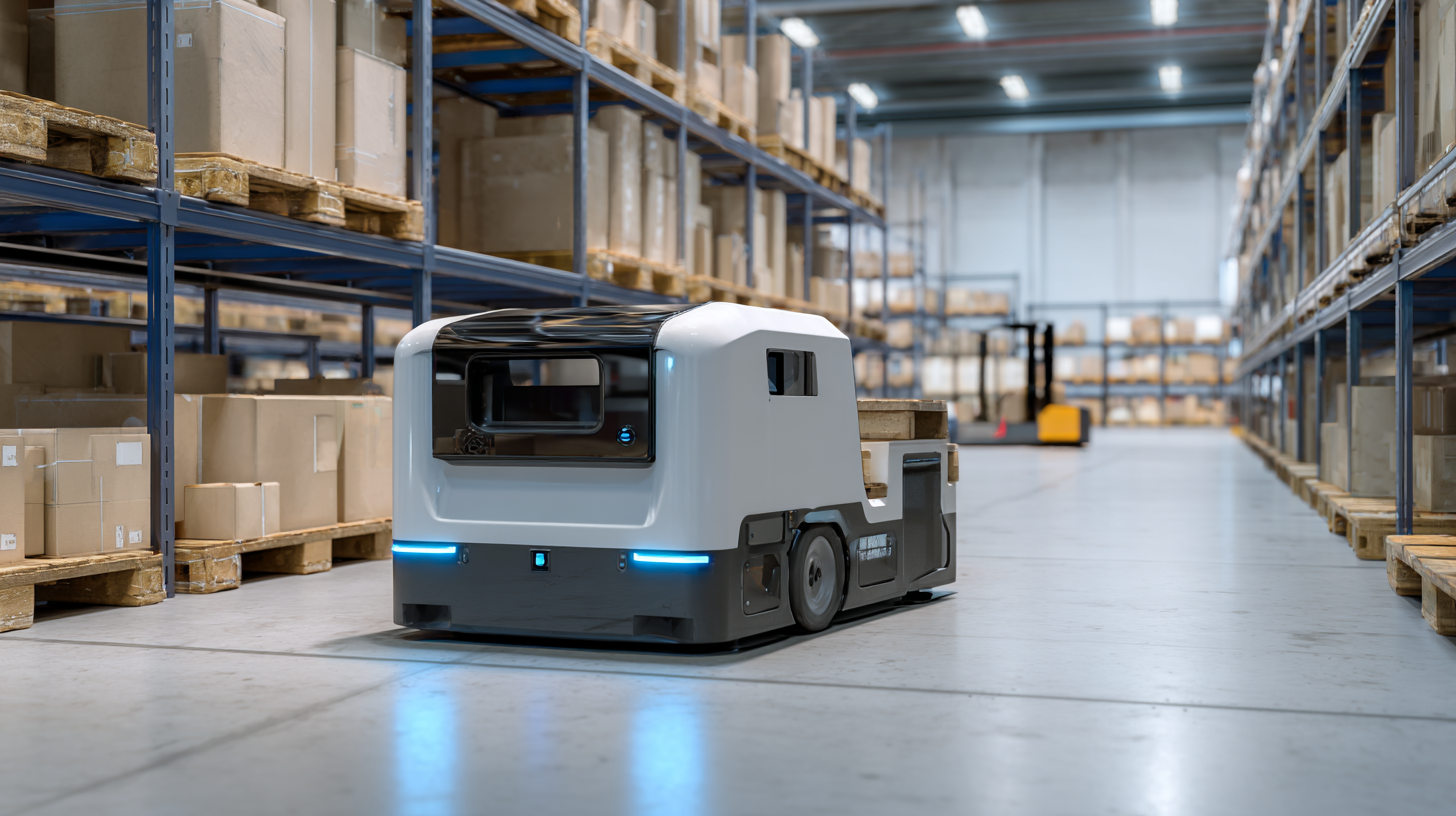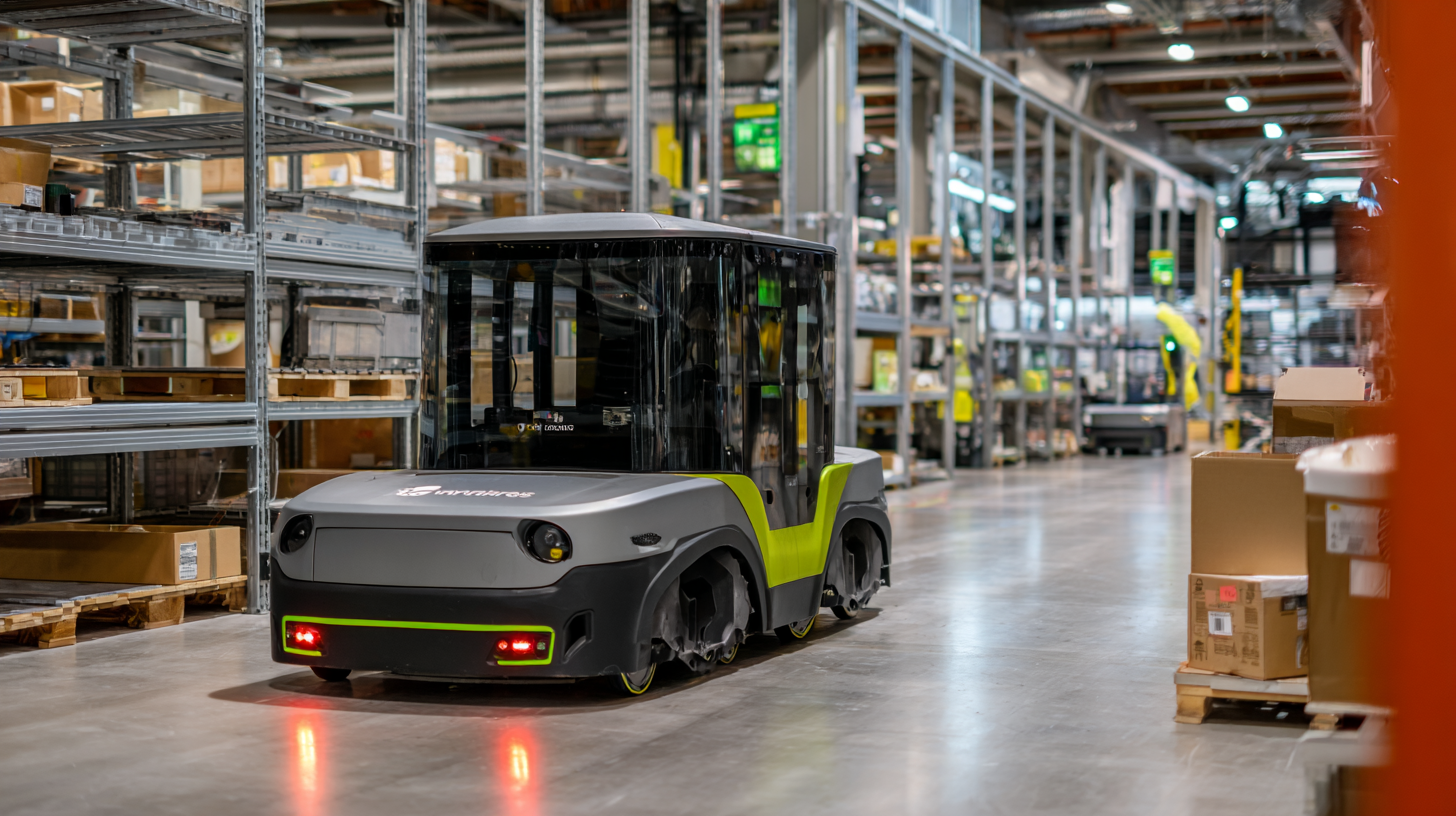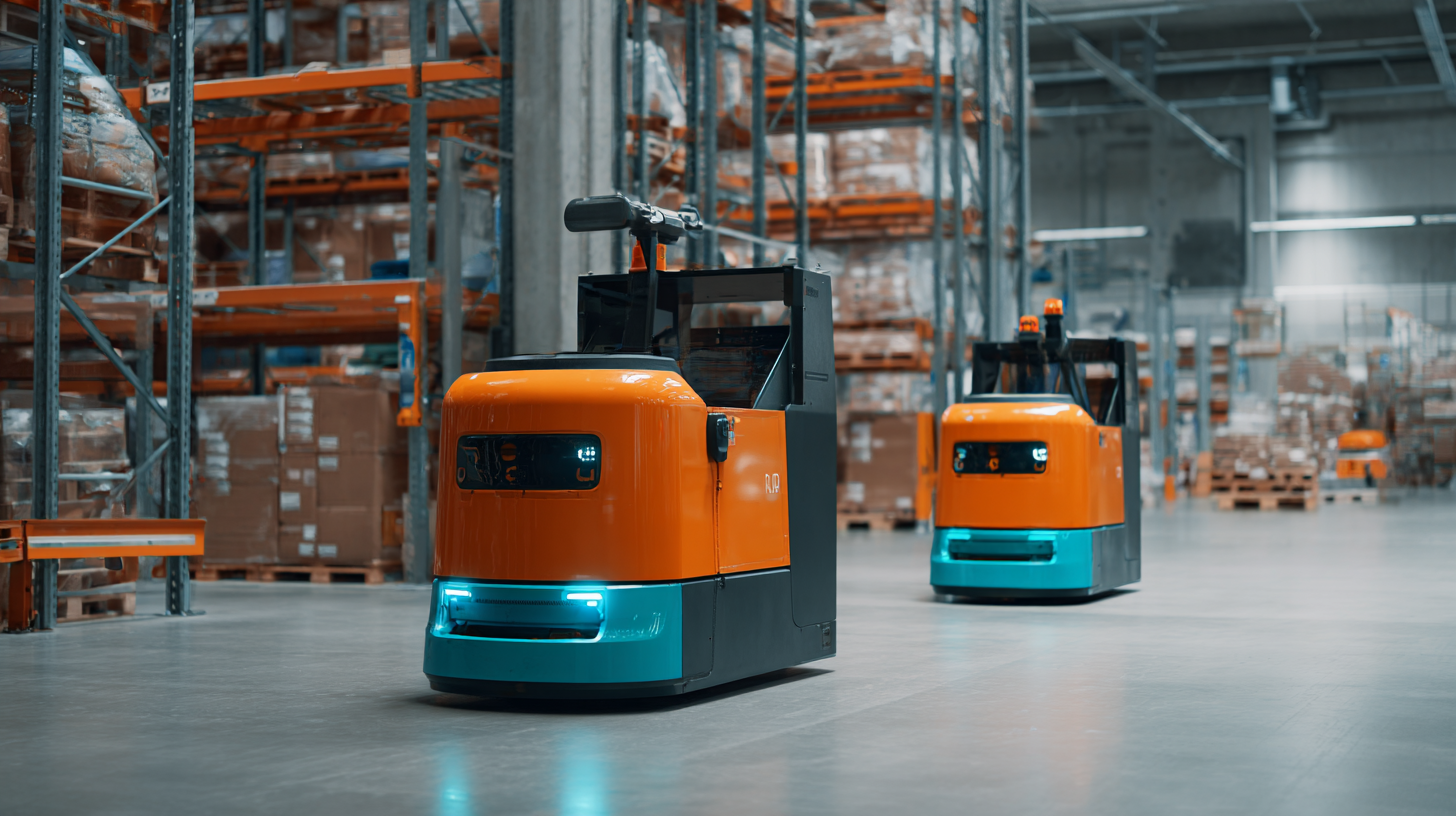How to Maximize Efficiency with AMR Robots: Insights from the 2023 Logistics Automation Report
In the ever-evolving landscape of logistics and supply chain management, maximizing efficiency has become paramount. The 2023 Logistics Automation Report highlights that warehouses utilizing AMR robots have reported a staggering 30% increase in operational efficiency compared to traditional systems. These autonomous mobile robots (AMR) not only streamline warehouse tasks but also reduce labor costs by up to 25%, according to recent market analyses. As businesses strive to keep pace with rising consumer demands and operational complexities, integrating AMR robots into their logistics framework is no longer a mere option but a necessity.

This guide delves into practical strategies for leveraging AMR robots effectively, ensuring that organizations can adapt to the dynamic demands of modern logistics while fostering innovation and growth.
Understanding AMR Robots: Key Technologies Driving Efficiency
Autonomous Mobile Robots (AMRs) are revolutionizing the logistics sector by enhancing operational efficiency through advanced technologies. Understanding the key technologies that drive AMR effectiveness can help organizations streamline their workflows. These robots utilize sophisticated navigation systems like LIDAR and computer vision to autonomously move through various environments, avoiding obstacles and optimizing routes in real-time. Such capabilities not only reduce human error but also maximize throughput in warehouses and fulfillment centers.
Tips: To maximize the efficiency of AMR robots, consider investing in robust fleet management software that integrates seamlessly with existing logistics systems. This will provide real-time data on robot performance and inventory, enabling better decision-making. Additionally, regular training for staff on robot interaction and maintenance can further enhance operational efficiency and minimize downtime.
Another critical technology for AMRs is AI-driven analytics. By analyzing data collected during operations, organizations can identify patterns and areas for improvement, leading to enhanced performance over time. Utilizing predictive maintenance software that leverages this analytics can also ensure robots are serviced proactively, thus avoiding unexpected breakdowns and maintaining continuous productivity.
How to Maximize Efficiency with AMR Robots: Insights from the 2023 Logistics Automation Report
| Technology Aspect | Description | Efficiency Impact (%) | Implementation Challenges |
|---|---|---|---|
| Navigation Technology | Utilizes LiDAR & vision systems for accurate route mapping | 20% | Require advanced mapping and real-time data processing |
| Battery Efficiency | Long-lasting batteries with rapid charging capabilities | 15% | Battery management and maintenance complexity |
| Data Analytics | Real-time analysis for adaptive routing and efficiency | 25% | Data integration across various systems |
| User Interface | Intuitive control platforms for operators | 10% | Training and adaptation period for staff |
| Integration with Existing Systems | Seamless operation with warehouse management systems | 30% | Compatibility issues with legacy systems |
Identifying Operational Areas for AMR Integration in Logistics
Identifying operational areas for Autonomous Mobile Robot (AMR) integration in logistics is crucial for maximizing efficiency. One of the primary sectors that can benefit from AMR technology is inventory management. AMRs can automate the process of transporting goods within warehouses, reducing the time and labor needed for manual handling. This technology can streamline stock replenishment and real-time inventory tracking, ultimately leading to a more responsive supply chain.
Another significant area for AMR implementation is order fulfillment. By integrating AMRs into picking operations, companies can enhance picking accuracy and speed. These robots can navigate through complex warehouse layouts, minimizing travel time and optimizing routes. This not only boosts productivity but also allows human workers to focus on higher-value tasks, such as quality control and customer service, thus improving overall operational efficiency.
Additionally, AMRs can play a vital role in the shipping and receiving processes. By automating the transport of goods to and from loading docks, logistics providers can reduce bottlenecks and improve turnaround times. The seamless flow of materials facilitated by AMRs ensures that products reach their destinations faster, enhancing customer satisfaction and driving competitive advantage in the logistics sector.
Best Practices for Implementing AMR Robots in Warehousing
Implementing Autonomous Mobile Robots (AMRs) in warehousing requires a strategic approach to maximize efficiency. First, organizations should conduct a thorough assessment of their current operational processes to identify areas where AMRs can provide the most significant benefits. This involves analyzing workflows, bottlenecks, and inventory management systems. By understanding specific needs and pain points, businesses can select the right AMR technology that aligns with their goals.

Training staff is another critical aspect of successful AMR implementation. Employees should be educated not only on how to operate these robots but also on how they can enhance productivity and safety. Engaging workers in the transition process fosters a culture of collaboration between human and robotic systems. Moreover, establishing clear protocols for task assignments and robot interactions ensures seamless integration into daily operations, minimizing disruptions and enhancing overall efficiency in the warehouse.
Measuring the Impact of AMR Robots on Supply Chain Performance
The integration of Autonomous Mobile Robots (AMRs) in supply chain operations is transforming efficiency metrics, as highlighted in the 2023 Logistics Automation Report. One key finding shows that organizations employing AMR technology have reported a 30% increase in operational efficiency. This uptick is largely attributed to AMRs' capability to automate repetitive tasks such as material transport, allowing human workers to focus on higher-value activities.
Additionally, the report indicates that companies utilizing AMRs have experienced a 25% reduction in lead times. This improvement is essential in today's fast-paced market where supply chain responsiveness is critical. Moreover, AMRs contribute to enhanced inventory accuracy by reducing human error, with one survey noting that inventory discrepancies fell by 40% in AMR-adopting firms. As businesses strive for agility and precision, the measurable impact of AMRs on supply chain performance is undeniable, establishing them as vital assets in contemporary logistics strategies.

Future Trends in AMR Technology and Their Implications for Logistics
As the logistics sector continues to evolve, the future trends in Autonomous Mobile Robot (AMR) technology promise to reshape operational efficiency significantly. According to the 2023 Logistics Automation Report, the global market for AMR is projected to reach $6.1 billion by 2026, growing at a compound annual growth rate (CAGR) of 18%. This surge is driven by advancements in artificial intelligence (AI) and machine learning, which allow AMRs to navigate complex environments more effectively, thereby reducing operational bottlenecks.
The report highlights that the integration of AMRs with Internet of Things (IoT) technology will enhance real-time data analytics, leading to better decision-making processes in warehouse management. By synergizing IoT with AMRs, logistics companies can expect to see a 25% increase in inventory accuracy and a 30% reduction in order fulfillment times. These innovations will not only streamline operations but also improve overall customer satisfaction as delivery times decrease and accuracy improves. As such, companies that invest in AMR technology today will likely position themselves advantageously in an increasingly competitive market.
Maximizing Efficiency with AMR Robots in Logistics
This chart illustrates the projected efficiency improvements offered by Autonomous Mobile Robots (AMRs) in various logistics functions by the year 2025, based on insights from the 2023 Logistics Automation Report. The data reflects potential percentage increases in efficiency across different areas of warehouse operations.
Related Posts
-

Unlocking the Future: An Ultimate Guide to Choosing the Right Autonomous Robot for Your Business
-

Maximizing Efficiency with Logistics Robotics A Comprehensive How to Guide
-

The Future of Robotics Automation Transforming Industries with Data Driven Innovations
-

Challenges Faced by Industries Embracing Robotics and Automation
-

Ultimate Guide to Mastering Agile Robotics for Business Success
-

Robotics Automation: A Comparative Analysis of Leading Solutions for Global Buyers